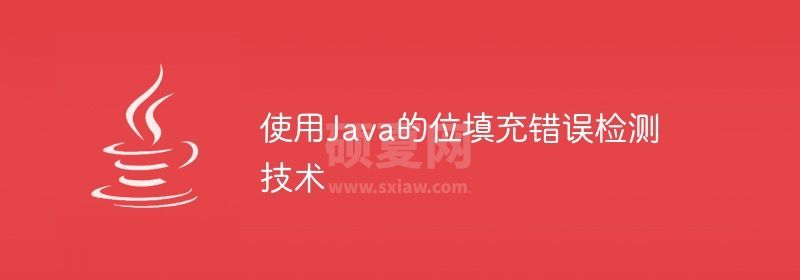使用Java的位填充错误检测技术

位填充是数据通信系统中使用的一种技术,用于检测和纠正数据传输过程中可能发生的错误。它的工作原理是向正在传输的数据添加额外的位,以便在发生错误时进行标记。
在Java中实现位填充的一种常见方法是使用标志字节(如0x7E)来指示一帧的开始和结束,并使用特殊的转义字节(如0x7D)来指示下一帧byte 是一个填充位。例如,发送方会在发送的数据中每次出现标志字节之前添加一个填充位,这样标志字节就不会在接收方被误认为是帧的开始或结束。
这是一个如何在 Java 中实现位填充的示例 -
public static byte[] bitStuff(byte[] data) {
final byte FLAG = 0x7E;
final byte ESCAPE = 0x7D;
// Create a new byte array to store the stuffed data
byte[] stuffedData = new byte[data.length * 2];
// Keep track of the current index in the stuffed data array
int stuffedIndex = 0;
// Iterate through the original data
for (int i = 0; i < data.length; i++) {
byte b = data[i];
// If the current byte is the flag or escape byte, stuff it
if (b == FLAG || b == ESCAPE) {
stuffedData[stuffedIndex++] = ESCAPE;
stuffedData[stuffedIndex++] = (byte) (b ^ 0x20);
} else {
stuffedData[stuffedIndex++] = b;
}
}
return stuffedData;
}
在接收端,您可以使用类似的概念来检索原始数据。
public static byte[] bitUnStuff(byte[] data) {
final byte FLAG = 0x7E;
final byte ESCAPE = 0x7D;
// Create a new byte array to store the unstuffed data
byte[] unstuffedData = new byte[data.length];
// Keep track of the current index in the unstuffed data array
int unstuffedIndex = 0;
// Iterate through the stuffed data
for (int i = 0; i < data.length; i++) {
byte b = data[i];
// If the current byte is the escape byte, unstuff the next byte
if (b == ESCAPE) {
unstuffedData[unstuffedIndex++] = (byte) (data[++i] ^ 0x20);
} else {
unstuffedData[unstuffedIndex++] = b;
}
}
return unstuffedData;
}
这是位填充技术的基本示例,可以对其进行增强以处理更多错误情况并使用 CRC 或校验和验证数据。
示例
当然!以下是如何在简单程序中使用 bitStuff() 和 bitUnStuff() 方法的示例 -public static void main(String[] args) {
byte[] data = {0x48, 0x65, 0x6C, 0x6C, 0x6F, 0x7E}; // Hello~
byte[] stuffedData = bitStuff(data);
System.out.println("Original Data: "+Arrays.toString(data));
System.out.println("Stuffed Data: "+ Arrays.toString(stuffedData));
byte[] unstuffedData = bitUnStuff(stuffedData);
System.out.println("Unstuffed Data: "+ Arrays.toString(unstuffedData));
}
当你运行这个程序时,它会首先调用bitStuff()方法来填充原始数据,然后打印出原始数据和填充后的数据。
Then it will call the bitUnStuff() method to retrieve the original data, then it will print the unstuffed data.
示例
对于给定的数据示例
0x48, 0x65, 0x6C, 0x6C, 0x6F, 0x7E,
输出
您将得到输出
Original Data: [72, 101, 108, 108, 111, 126] Stuffed Data: [72, 101, 108, 108, 111, 93, 30, 126] Unstuffed Data: [72, 101, 108, 108, 111, 126]
可以看到填充数据多了一个字节93, 30,这是7E的填充版本。
您还可以看到未填充的数据与原始数据相同,这确认数据已成功检索,没有任何错误。
以上就是使用Java的位填充错误检测技术的详细内容,更多请关注其它相关文章!
